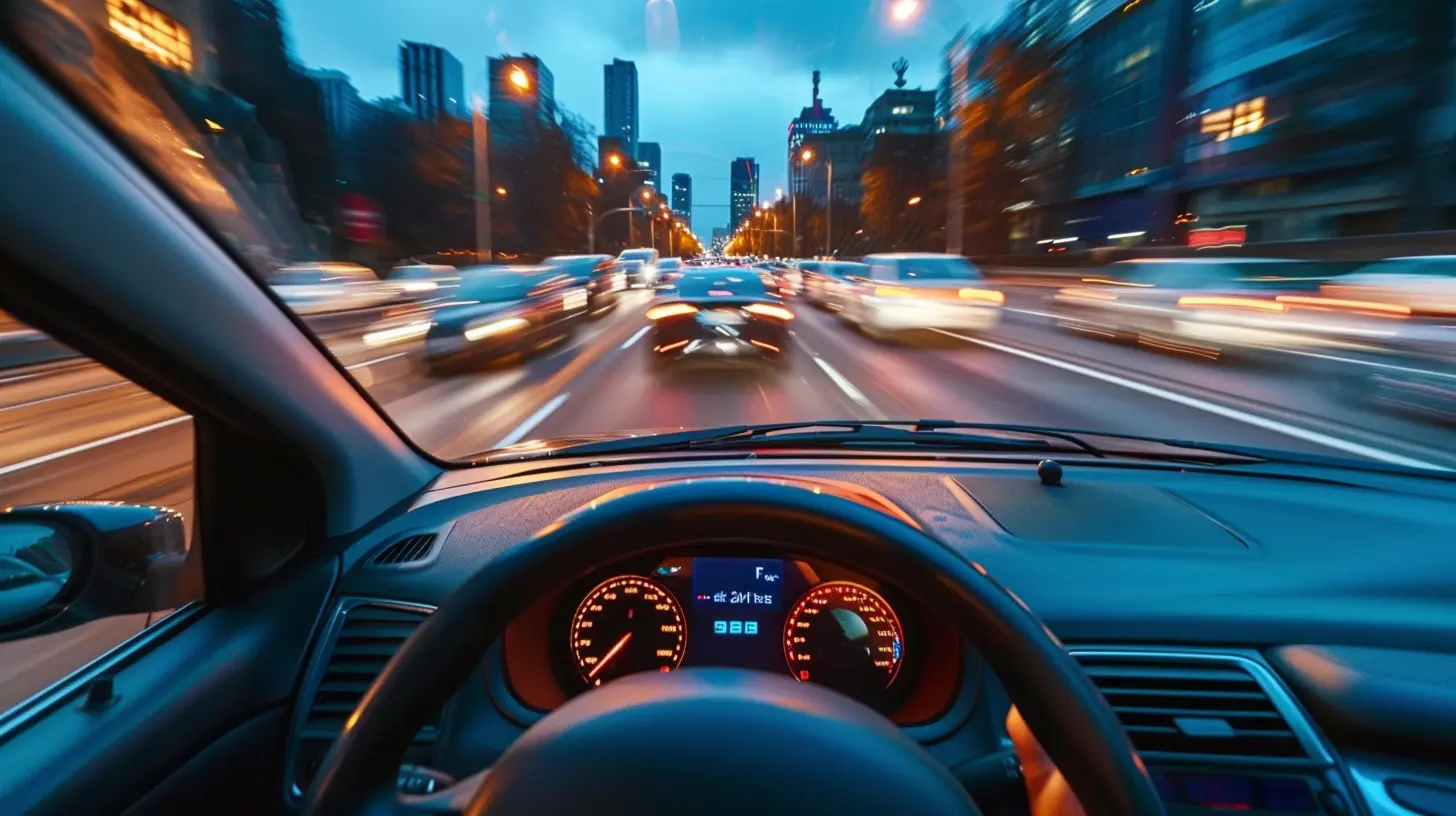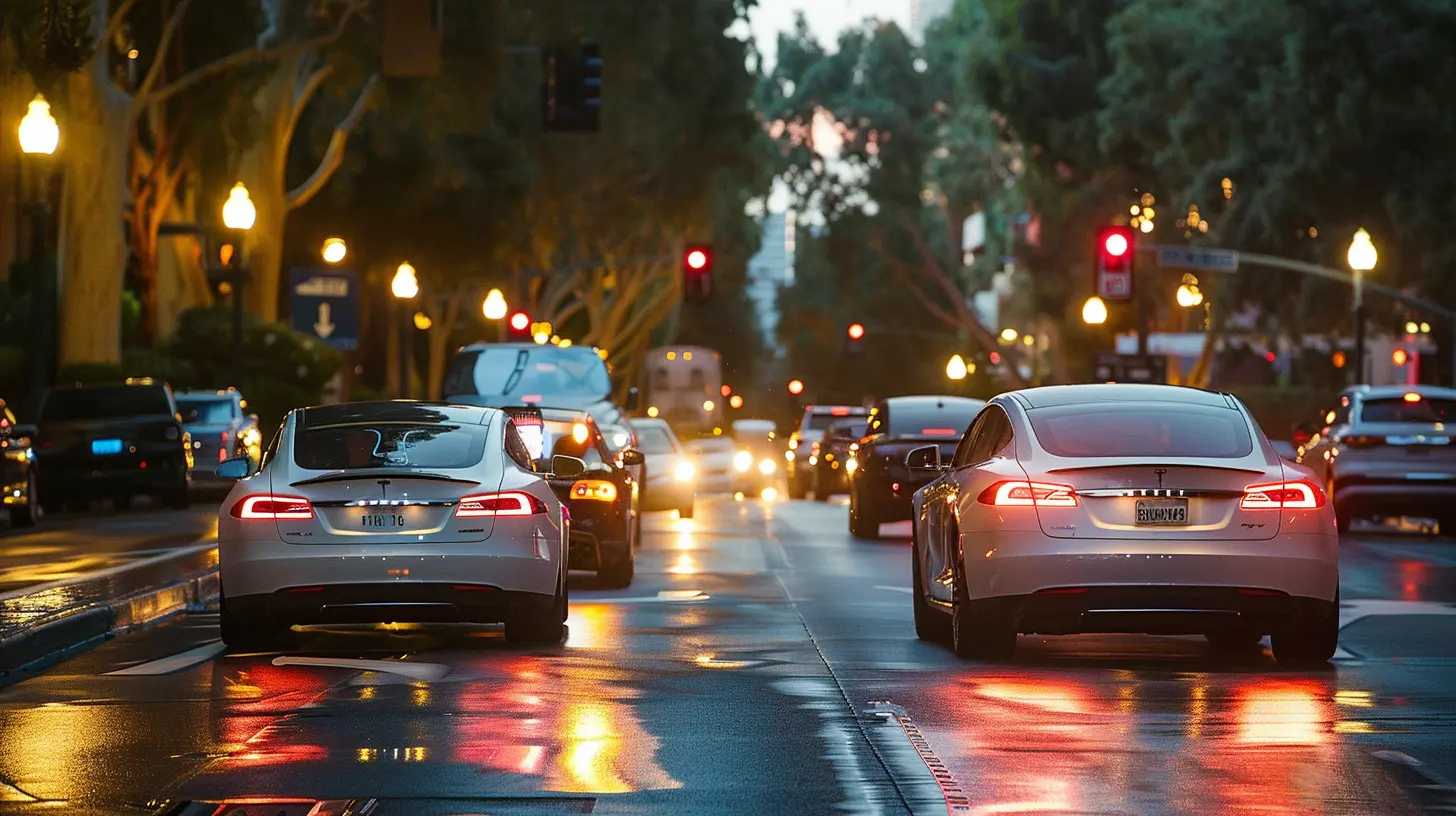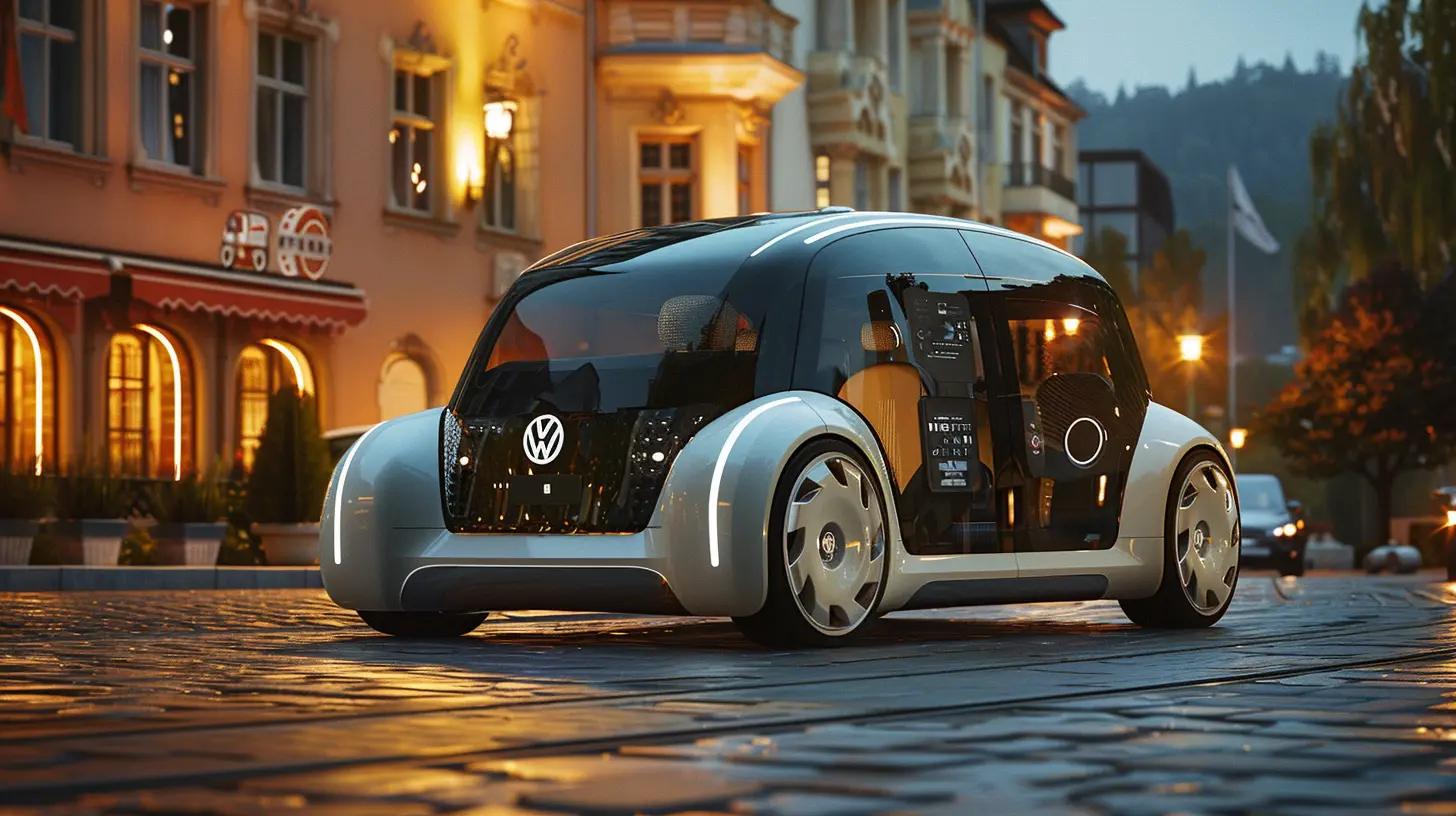Are Autonomous Cars the Solution to Distracted Driving?
10 May 2025
Ever been stuck behind a driver glued to their phone, oblivious to the road? It’s frustrating—and dangerous. Distracted driving is one of the biggest threats on the road today, causing thousands of accidents every year. With smartphones, infotainment systems, and even in-car conversations pulling attention away, staying fully focused behind the wheel is harder than ever.
Enter autonomous cars: vehicles that promise to take control of the driving experience and, in theory, eliminate human errors. But are self-driving cars really the magic bullet for distracted driving, or are we just trading one set of problems for another? Let’s break it down.
The Growing Problem of Distracted Driving
What Exactly Is Distracted Driving?
Distracted driving is anything that takes your attention away from the road. It includes:- Visual distractions: Looking at your phone, GPS, or even checking out something outside the window.
- Manual distractions: Taking your hands off the wheel to text, eat, or adjust the radio.
- Cognitive distractions: Your mind is on something else—maybe a stressful email or a heated conversation.
According to the National Highway Traffic Safety Administration (NHTSA), distracted driving claims thousands of lives each year. With all the tech inside modern cars, the problem is only getting worse.
The Role of Technology in Driving Distractions
Ironically, while technology is supposed to make driving safer, it often does the opposite. Smart dashboards, touchscreens, and voice assistants all offer convenience, but they can also encourage drivers to engage in risky multitasking.Apple CarPlay, Android Auto, and even hands-free phone calls give us the illusion of safety. But guess what? Even talking to Siri or Alexa can pull your brain away from driving. Studies show that cognitive distractions slow reaction times, even when hands stay on the wheel.
So if technology is part of the problem, can it also be the solution?
How Autonomous Cars Aim to Solve Distracted Driving
What Are Autonomous Cars?
Autonomous (or self-driving) cars use AI, sensors, cameras, and radar to navigate roads without human intervention. They range from Level 1 automation (basic driver assistance like cruise control) to Level 5 (fully self-driving with no human input required).The Promise: A World Without Human Error
The biggest argument for self-driving cars? They take unpredictable human behavior out of the equation. No more texting drivers swerving between lanes, no more tired commuters zoning out in traffic—just precise, machine-driven navigation.Here’s how autonomous vehicles can tackle distracted driving:
1. No Need for Human Focus – If the car drives itself, there’s no need for drivers to stay alert.
2. Predictable Reactions – AI doesn’t get emotional, impatient, or distracted. It follows traffic rules consistently.
3. Advanced Sensors & AI Processing – Cameras and LiDAR can detect obstacles faster than a human could.
4. Vehicle-to-Vehicle Communication (V2V) – Cars can "talk" to each other, preventing sudden collisions.
Sounds great, right? But hold on—there are a few bumps in the road.
The Challenges of Relying on Autonomous Cars
1. The Tech Isn’t Perfect Yet
Self-driving systems still make mistakes. Tesla’s Autopilot and Waymo’s autonomous cars have been involved in accidents, some fatal. While AI is improving, it’s not flawless. Would you really trust a machine with your life when even a tiny software glitch could spell disaster?2. Driver Complacency
There’s a real risk that autonomous systems could make drivers too relaxed. Studies show that people tend to zone out when they rely on automation. If a car suddenly requires human intervention in an emergency, will the driver be alert enough to take over in time?3. Ethical Dilemmas
Self-driving cars rely on programming to make life-and-death decisions. If an accident is unavoidable, should the AI prioritize protecting its own passengers or minimizing overall harm? These ethical gray areas make automation more complicated than simply "eliminating human error."4. Infrastructure & Legal Hurdles
For autonomous cars to work seamlessly, roads, traffic signals, and laws need to adapt. A fully self-driving world requires massive investment in smart infrastructure and updated traffic laws—something that won’t happen overnight.5. Cost & Accessibility
Let’s face it: autonomous cars aren’t cheap. Even if they eventually become the norm, millions of people will still drive traditional vehicles for years to come. Until self-driving technology is affordable and widespread, distracted driving won’t completely disappear.
The Middle Ground: A Hybrid Approach
Since fully autonomous cars may not be ready to take over anytime soon, the best bet for reducing distracted driving lies in a mix of technology and human responsibility. Here are some solutions that bridge the gap:1. Advanced Driver Assistance Systems (ADAS)
ADAS features like lane departure warnings, automatic emergency braking, and adaptive cruise control help reduce human errors without fully taking over the driving experience.2. AI-Powered In-Car Monitoring
Some newer cars come equipped with driver-monitoring systems that detect distracted behavior—like a camera that tracks your eye movement and alerts you if you’re not looking at the road.3. Stricter Distracted Driving Laws
Legislation banning phone use while driving, combined with harsher penalties for distracted driving, can help deter risky behavior.4. Public Awareness & Education
Tech alone won’t fix everything. Drivers still need to take responsibility. Educating people about the dangers of distracted driving is crucial.Will Self-Driving Cars Solve Distracted Driving?
The short answer? Not yet. While autonomous vehicles have the potential to eliminate human-related distractions, they introduce new concerns, from technical reliability to ethical dilemmas. Until self-driving technology is fully developed and widely adopted, distracted driving will remain an issue.For now, a combination of smarter regulations, better driver education, and semi-autonomous safety features seems to be the best way forward. So while self-driving cars might be part of the long-term solution, human responsibility still plays a major role in keeping our roads safe.
Final Thoughts
Self-driving cars promise a future where we can kick back, relax, and let AI handle the road. But we're not there yet. Until technology catches up with our expectations, staying focused while driving is still our best defense against accidents.So next time you're tempted to check a text or adjust your playlist while driving, ask yourself—is it really worth the risk? Because until autonomous cars truly take over, road safety is still in our hands.
all images in this post were generated using AI tools
Category:
Autonomous VehiclesAuthor:

John Peterson
Discussion
rate this article
8 comments
Patricia Matthews
Autonomous cars could revolutionize road safety.
May 18, 2025 at 11:08 AM

John Peterson
Absolutely, autonomous cars have the potential to significantly reduce accidents caused by human distractions, leading to safer roads for everyone.
Zorion Vasquez
Autonomous cars won't eliminate distractions.
May 17, 2025 at 4:38 AM

John Peterson
While autonomous cars may reduce some distractions, they won't eliminate all forms of distraction, as passengers can still engage in various activities.
Zorina McGlynn
Great article! It’s exciting to see how autonomous cars could revolutionize road safety and reduce accidents caused by distracted driving. Embracing this technology might pave the way for a safer driving experience for everyone!
May 16, 2025 at 6:46 PM

John Peterson
Thank you! I'm glad you found the article insightful. Exciting times ahead for road safety with autonomous technology!
Brooke Bowers
Autonomous cars may reduce distracted driving, but not eliminate it.
May 16, 2025 at 10:28 AM

John Peterson
You're right; while autonomous cars can significantly reduce opportunities for distracted driving, they won't completely eliminate human distractions. Education and awareness will still play crucial roles in promoting safe driving behaviors.
Rebecca Underwood
Autonomous cars: the perfect solution for distracted drivers who can’t resist scrolling through memes! Just imagine—no more accidental lane changes while laughing at cat videos. Just sit back, relax, and let your car handle the chaos… or at least keep you out of it!
May 16, 2025 at 4:20 AM

John Peterson
While autonomous cars could reduce risks for distracted drivers, they still face challenges like technology limitations and ethical considerations. Education and responsible driving remain crucial.
Geneva Campbell
Can’t wait for stress-free rides ahead!
May 13, 2025 at 10:57 AM

John Peterson
Thank you! We share your excitement about the potential of autonomous cars to enhance safety and reduce stress on the road.
Susan Soto
Great article! Autonomous cars might just be our ticket to safer roads. Imagine a future where we can binge-watch our favorite shows without worrying about distractions. Exciting times ahead! 🚗✨
May 12, 2025 at 7:42 PM

John Peterson
Thank you for your positive feedback! The potential for autonomous cars to enhance road safety and free up our time is indeed an exciting prospect.
Marley McEachern
Sure, autonomous cars might solve distracted driving—unless they start texting each other! Imagine a traffic jam of vehicles arguing over who has the right to turn left!
May 12, 2025 at 4:55 AM

John Peterson
That's a creative scenario! While autonomous cars aim to reduce human error, effective communication between vehicles is key to preventing such situations and ensuring smooth traffic flow.
MORE POSTS

How Nanotechnology is Shaping the Future of Batteries

The Evolution of Smartwatches: From Timepieces to Health Hubs

Lightweight and Powerful: The Rise of Ultrabooks in the Tech World

The Best Modular Workstations for Remote Workers: A Comprehensive Guide

Fintech Innovations Driving the Future of Retirement Planning

The Role of AI in the Next Generation of Smart Headphones